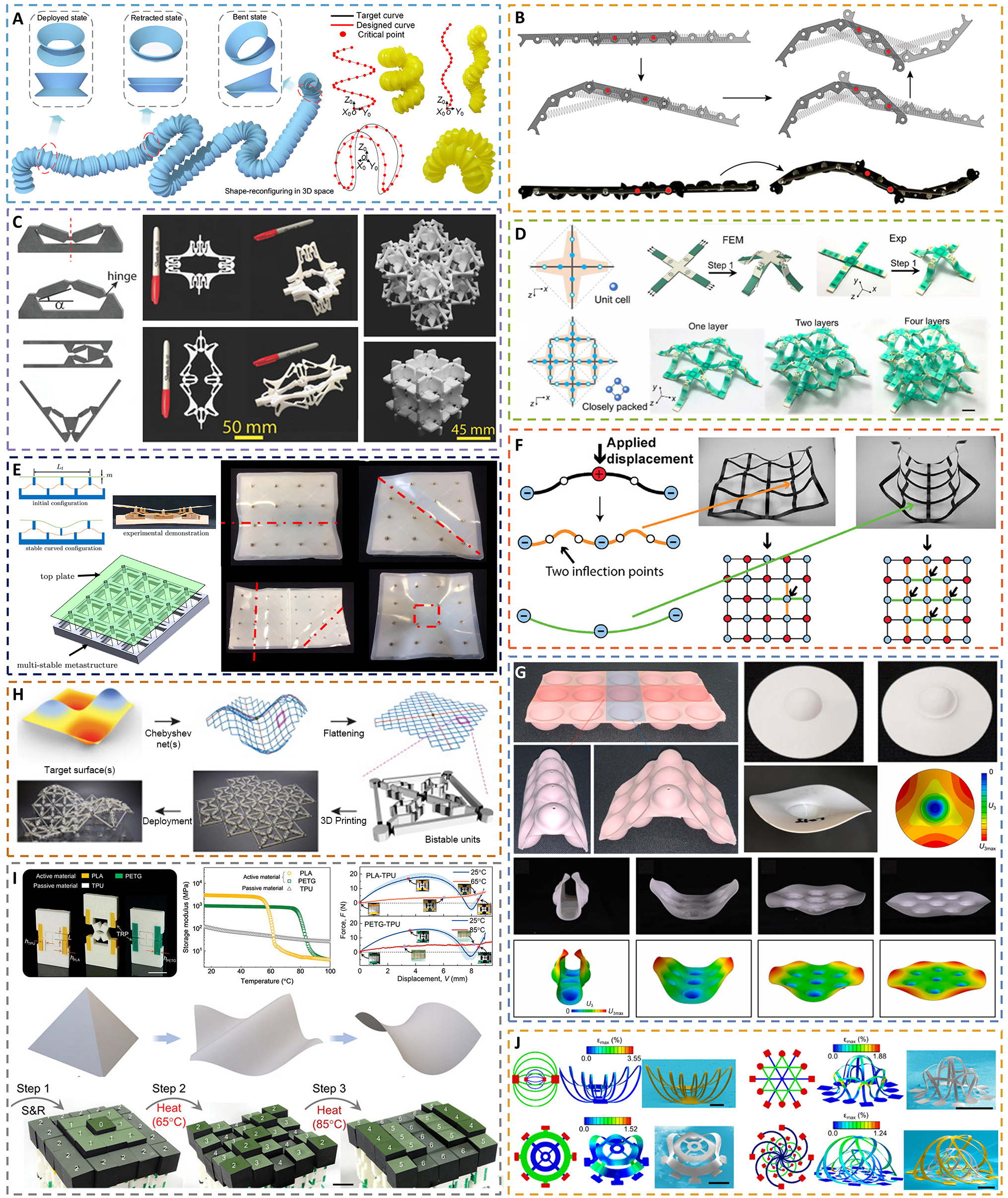fig2

Figure 2. Morphing matter based on elastic instabilities. (A) Reconfigurable flexible straws featuring stretched, compressed, and bent stable states. Through permutation and combination of these unit cells, the interconnected structure can present customized complex 2D and 3D configurations. Reproduced with permission from[76]; Copyright 2022, Elsevier Ltd; (B) Deployable linkages comprised of bistable joints support transition waves to trigger the curved configurations. Reproduced with permission from[79]; Copyright 2020, National Academy of Sciences, U.S.A; (C) Architected materials demonstrate a wide range of stable configurations through the use of bistable flexible mechanisms. The constituent triangular unit exhibits bistable behavior similar to symmetric inclined beams with fixed ends. By tessellating the beam elements in series or perpendicular directions, the multistable structures exhibit hysteresis under loading, enabling energy absorption. Reproduced with permission from[80]; Copyright 2022, Wiley-VCH; (D) Self-folding bistable elements comprised of an elastic layer bonded to a plate can assemble and transform into multimodal 3D structures under stepwise stretch-and-release procedures. Reproduced with permission from[81]; Copyright 2022, AAAS; (E) Multistable surfaces connected with 2D arranged snapping beams exhibit curved configurations in different directions resulting from displacements applied to the top plate and bistable units. Reproduced with permission from[83]; Copyright 2022, Elsevier Ltd; (F) Reconfigurable structures are constructed using novel multistable unit cells that combine elastic square frames with equi-biaxially pre-stretched soft membranes. Tuning the ratio of bending to torsional stiffness of anisotropic frames can control the number of multistable states. Applying out-of-plane force to intersection points of the grid causes the structure to snap into programmed states. Reproduced with permission from[84]; Copyright 2022, Wiley-VCH; (G) Snapping-induced morphing sheets with periodically tessellated spherical caps exhibit global curved states activated by popping individual shell elements. Hoop compression results in azimuthal buckling for single elements and introduces an interaction between snapping elements underlying the global curve shape. Reproduced with permission from[85]; Copyright 2023, Elsevier Ltd; (H) Inverse designed reconfigurable surfaces are discretized as Chebyshev nets. The discrete grid can change shape by the elongation or contraction of diagonal bistable units. Reproduced with permission from[86]; Copyright 2021, Elsevier Ltd; (I) Pixelated metamaterials with dense information embedded in programmed bistable kirigami-based units can be decoded sequentially by external stimuli such as stretching and temperature. Reproduced with permission from[87]; Copyright 2023, Wiley-VCH; (J) Complex 3D mesostructures with multiple layers of advanced materials popped up from releasable plane precursors via compressive buckling. Reproduced with permission from[89]; Copyright 2016, AAAS. FEM: Finite element method.






